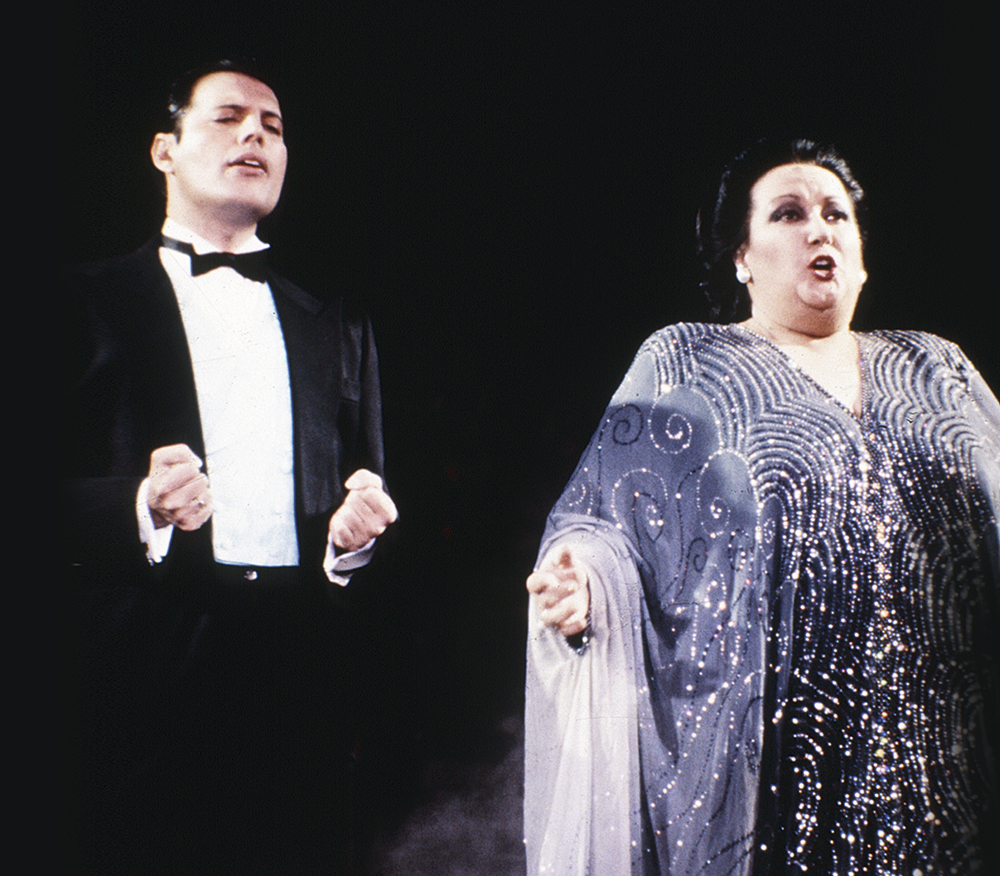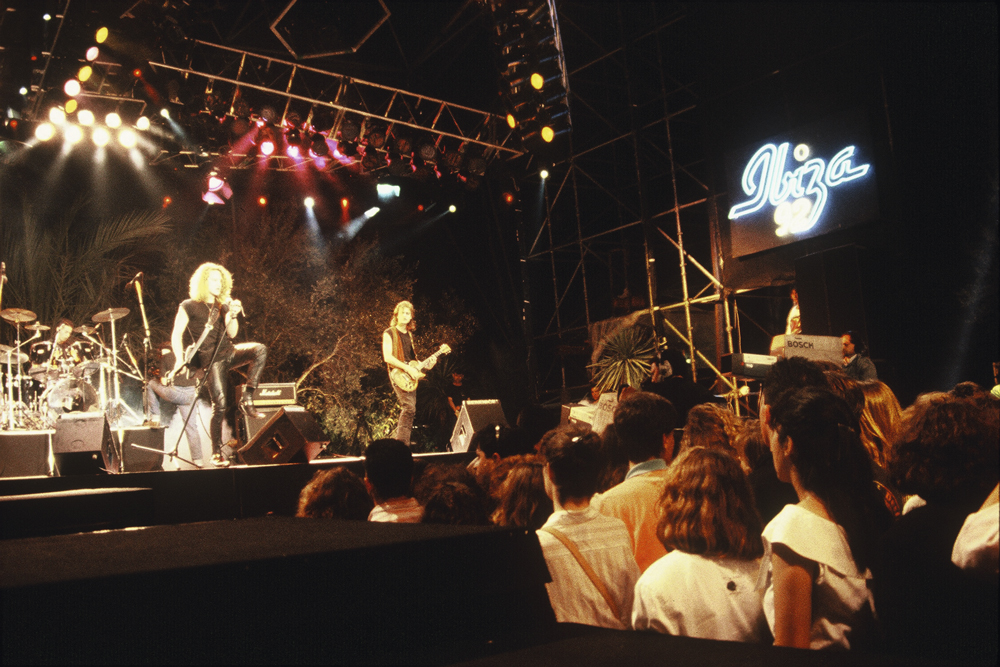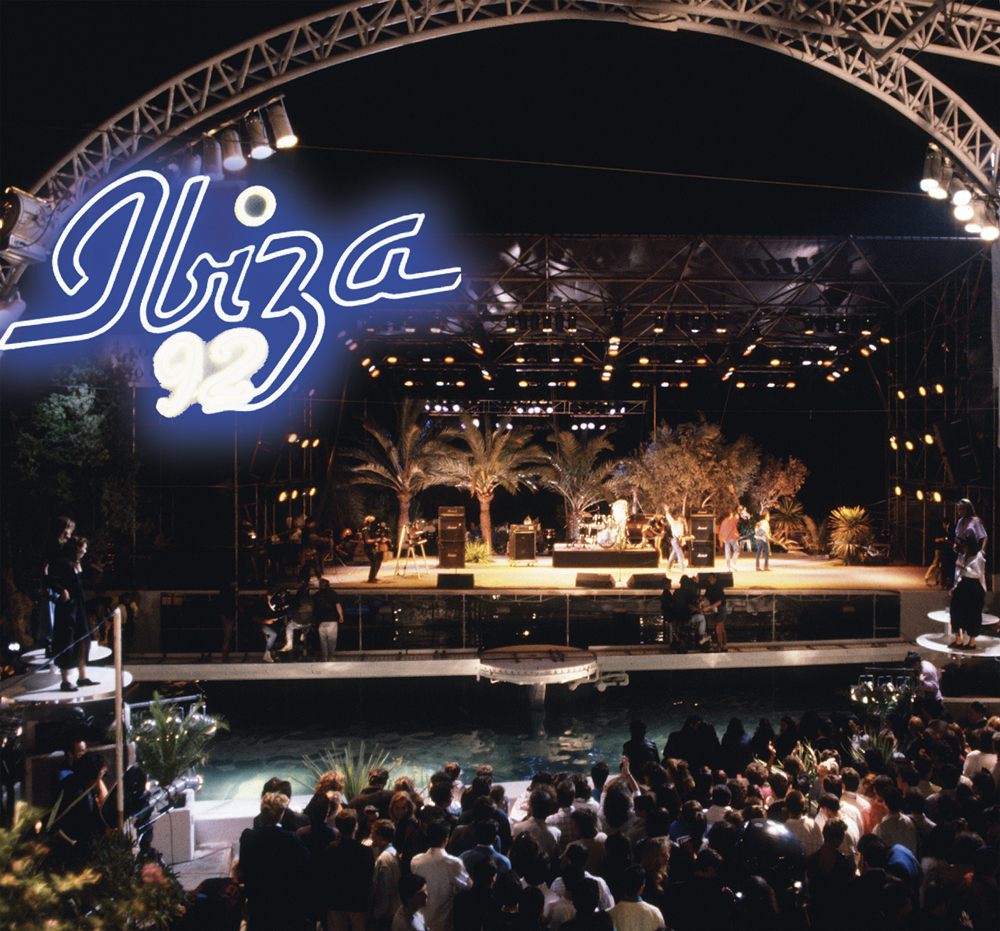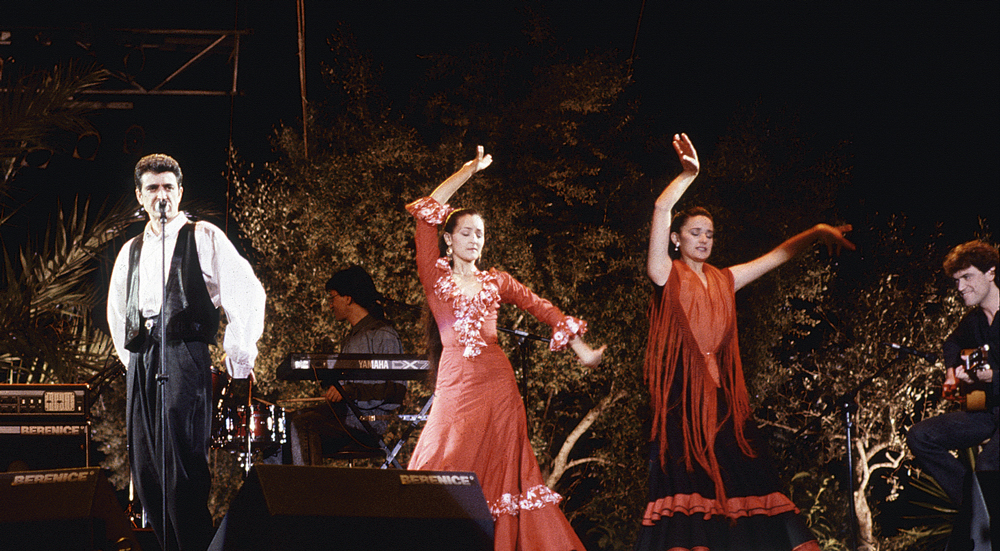Ibiza 92
Cuando Montserrat conoció a Freddie

By Pablo Sierra
Photos courtesy of Juan Suárez
In the middle of that glorious decade known as the Eighties, Spain was taking firm steps towards becoming the modern society that we know today.
There was a hurry to take advantage of the opportunities that the Barcelona Olympic Games and the Seville Expo would provide. Music, and Ibiza, wasn’t about to get left behind. Pino Sagliocco, an Italian based in Ibiza, escaped the town of his birth, Mezzogiorno, to become one of the boldest promoters in the world. Based In Ibiza at the beginning of the 80s, Sagliocco was in the right place, at the right time, when he invented Ibiza’92.“What makes Pino Sagliocco great is his ability in thinking bigger, better and further than the rest of us mortals.
That’s what makes him unique and incomparable.” said Juan Suárez, one of the collaborators who worked with Pino on the festival, held in KU discotheque, that hosted concerts from la crème de la crème of the music world, between 1987 and 1990. Grace Jones, Spandau Ballet, Duran Duran, Mick Jones from The Clash, Chris Rea, El Último de la Fila, Hombres G, and Ramoncín were just some of the great names that played.

Frank Zappa attended the concerts and happily chatted to journalists and music lovers about how music was changing culture, something he unfortunately didn’t get to see himself due to his premature death in 1993. Suárez continued “Zappa was living proof that when superstars come to Ibiza they are so much more relaxed, because they get to escape their normal routine”.
Before Ibiza’92, Suárez had already been on the KU stage to present James Brown in concert (which was another Sagliocco production). The Godfather of Soul was in the twilight of his career, and although he gave the promoters a hard time with his extravagant requests, the music that Brother Brown delivered that night made the walls drip with soul. An incredible concert.
Before Ibiza’92, Suárez had already been on the KU stage to present James Brown in concert (which was another Sagliocco production). The Godfather of Soul was in the twilight of his career, and although he gave the promoters a hard time with his extravagant requests, the music that Brother Brown delivered that night made the walls drip with soul. An incredible concert.
Sagliocco’s wish came true on 30th May 1987, and was filmed by the cameras from state channel, Spanish Television, with two thousand people in the audience and a production that cost 300 million pesetas, a large amount of money at the time (equivalent to the annual salary of three footballers from Real Madrid or FC Barcelona, for example). Caballé, as journalist Jacinto Antón wrote in El País, was led by Freddie Mercury dressed in a tuxedo on to the stage and this image entered into the history of music and sports. Five years later the song was the official anthem of the Barcelona Olympic Games.

At a time when the internet was still a distant dream Suarez recalled that “you had to travel to London, Madrid, Barcelona, Los Angeles or the fashion capitals to hire the big artists. Negotiations and contracts were made by telex (note for millennials: the telex, or teletype, was a device that allowed to the sending of typed messages, an analogical fusion between the 19th telegraph and the 21st century WhatsApp, that thirty years ago, was very useful for war correspondents and event promoters to send stories or contracts to the other parts of the world).
This method was followed by fax and telephone. However the personal presence of the promoter was important because it gave credibility, economic guarantees and visibility for projects” The technical side of things was also a challenge. In the late Eighties, organising a festival on the island – the Sueños de Libertad festival is a recent example – was much more expensive and complex than organising it on the Spanish peninsula.
“Setting up a show on the island costs ten times more work, money, passion and effort than in any other part of the world. Back then there were no light or sound companies on the island that had the necessary equipment for a concert.
This meant having to bring in amplifiers, lights and sound equipment from outside of the island, and this made it very difficult to organise any concerts. You had to resort to playback at times, especially when it was recorded for television, for takes, repeats and so on. And some artists would only perform with playback because they loved it so much,” said Suarez.

However, Suárez considers that “Ibiza’92 was a groundbreaking event, both visually and musically, it was well worth the effort”. “The island was then known as a destination for family tourism, or for the British, partying in Sant Antoni. The international broadcast of the festivals, and the number of well-known artists who performed, generated a new trend that turned the island into an unmissable destination for music and entertainment. Pino Sagliocco planted the seed of what Ibiza is now: the mecca of global electronic music “.